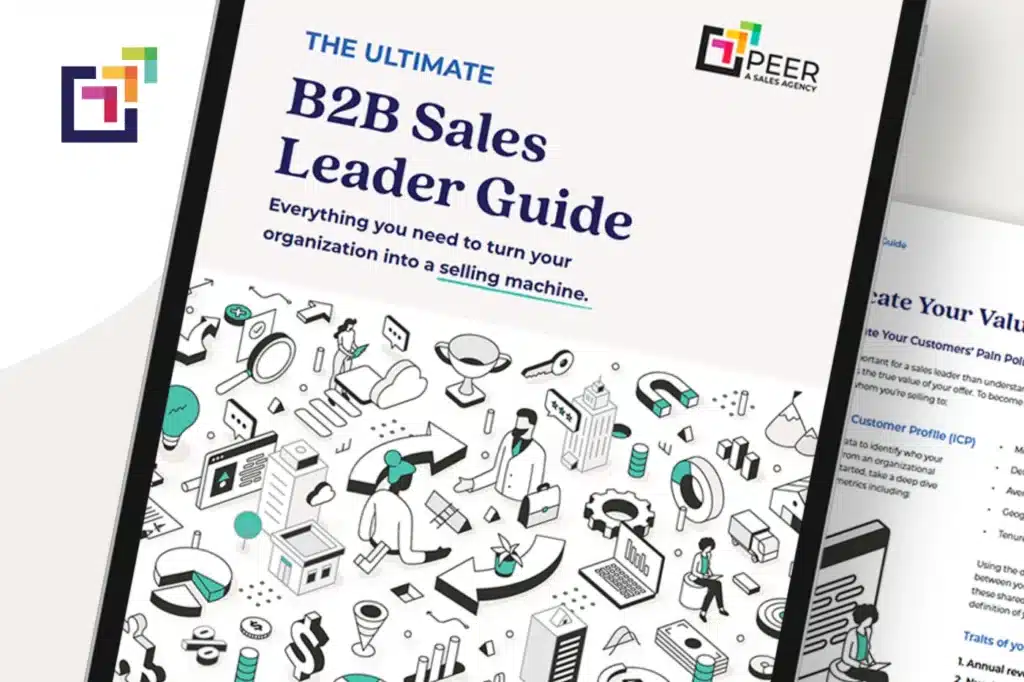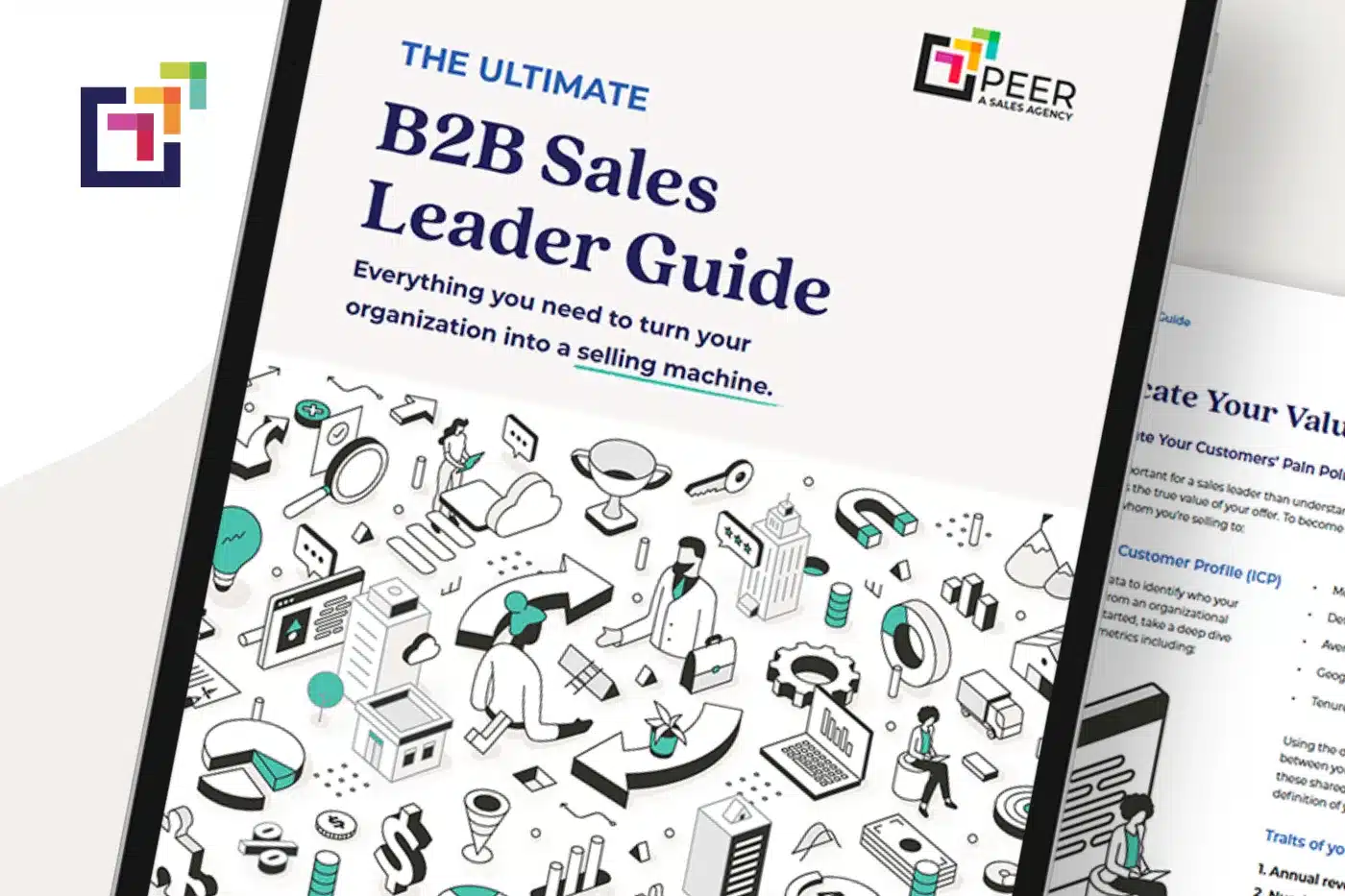If your business has a wish list of clients—something like the top 25, 50, or even 100 businesses that you know you can solve problems for—you should be considering Account-Based Marketing (ABM) as a key strategy to get more of the big fish from your wish list on the hook.
Account-Based Marketing (ABM) is a focused growth strategy used by B2B marketers. Instead of casting a wide net to capture leads, ABM campaigns target a select group of high-value accounts. Marketing and sales teams unite to create personalized experiences for these key accounts.
ABM is more than just another marketing buzzword; it’s a powerful approach that targets specific companies with hyper-customized content and collateral instead of casting a wide net. By focusing on the needs of a particular account, your business can create tailored messages that resonate deeply with these high-value potential clients.
Let’s talk about ABM campaigns, how they work, and the unique benefits and drawbacks they bring to sales and marketing teams.
How Does Account-Based Marketing Work?
ABM works by identifying a list of high-value target accounts and developing a highly customized, multi-channel campaign to reach the limited number of key stakeholders at the companies on that list.
ABM is particularly effective for those businesses with niche audiences. In a way, ABM campaigns flip your funnel: instead of starting with mass marketing that reaches hundreds of thousands of possible targets that then get whittled down to the key stakeholders at the best-qualified companies, you start with a very narrow list of ideal-fit prospects and try to get them to see the value of your solution.
B2B companies often have a limited number of target companies that fit their ideal customer profiles. ABM allows marketing strategies to concentrate on those few companies.
This strategy involves deep research into each target account. Sales and marketing teams create personalized content for each target company—and even each stakeholder in each company.
Marketing efforts aim to engage key stakeholders with specific solutions. The sales process becomes a series of personalized campaigns, leading to shorter sales cycles and stronger relationships with individual accounts.
Key Differences: Account-Based Marketing vs. Lead Generation
- Approach:
- ABM focuses on a select list of highly qualified, well-researched key accounts.
- Lead generation seeks a broad range of potential customers and qualifies each lead and company as the campaign goes on.
- Targeting:
- ABM targets specific high-value accounts based mostly on your Ideal Customer Profile.
- Lead generation casts a wider net to gather as many leads as possible, based mostly on your Personas.
- Personalization:
- ABM uses hyper-personalized experiences and campaigns.
- Lead generation is less personalized and aims to speak to broad pain points experienced by many people in targeted job titles or industries.
- Sales Cycles:
- ABM can take longer to launch and to result in revenue. This is because it involves tailoring messages to each account.
- Lead generation may lead to quicker lead capture but less targeted sales.
Benefits of Account-Based Marketing
Account-based marketing offers many advantages for B2B companies. Focusing on high-value accounts only allows small sales teams to use resources more efficiently.
The strategy also creates closer alignment between sales teams and marketing teams. This leads to an effective sales process that targets key stakeholders. ABM enhances the customer journey with personalized experiences. This can build stronger relationships with potential customers.
Sales & Marketing Alignment
ABM campaigns help bridge the gap between marketing and sales teams. Both teams work together to target high-value accounts.
They align on objectives, strategies, and key accounts to create a seamless approach. This cooperation ensures that all efforts support the same goals. The result is a more coordinated sales process and fewer missed opportunities. When marketing and sales move in the same direction, it boosts their overall effectiveness.
Higher ROI and ROAS
With ABM, companies typically see a higher return on investment (ROI) and return on ad spend (ROAS).
Focusing on individual accounts means resources aren’t wasted. Marketing efforts are more precise and effective. This laser focus helps companies achieve better outcomes with less expenditure. Personalized campaigns resonate better with potential customers, leading to more conversions. As a result, businesses see greater rewards for their efforts.
Shortened Sales Cycles
ABM campaigns can significantly shorten the sales cycle for B2B companies.
Personalized experiences and clearer targeting allow prospects to move quickly through the sales funnel. By understanding the customer journey, companies can address client needs faster. When sales reps tailor their approach for key stakeholders, decisions are made more swiftly. This shortened timeline means companies close deals quicker, improving the bottom line.
What are the Drawbacks of Account-Based Marketing?
Running an ABM campaign has some risks and drawbacks to be aware of.
ABM requires a significant investment of time, both from marketing and each salesperson on the ABM team.
Every potential stakeholder at each targeted account must receive personalized attention, which can stretch teams thin. While assets like email and deck templates are very helpful in ABM, each asset will need to be thoroughly customized with information about the target account, the specific stakeholder you’re sending it to, and the specific product-pain fit you’ve identified as most impactful for this account.
That means a lot of asset development and design on the marketing side and a lot of research and customization work on the sales side.
Companies with large potential customer bases may find ABM too time-consuming. There’s also the risk that if a key account doesn’t convert, you’ve wasted significant time and effort.
What Do I Need to Start an ABM Campaign?
Starting a successful ABM campaign requires several essential assets.
Firstly, a detailed target account list is crucial. It serves as the foundation of your ABM strategy, enabling you to identify and prioritize high-value accounts that align with your business objectives. The list should include criteria such as industry, company size, location, and key decision-makers within those organizations.
In-Depth Understanding of Target Accounts
In addition to a target list, a comprehensive understanding of each account is vital. Researching company backgrounds, analyzing their current needs, and identifying pain points will allow for the creation of tailored messaging that resonates with each prospect.
Tools like LinkedIn Sales Navigator, industry reports, and company websites can provide insight into an account’s business goals and challenges.
Personalized Marketing Content & Sales Collateral
Once you have a targeted account list and understand their unique challenges, the next step is to develop deeply personalized marketing content.
This can include customized emails, case studies, white papers, and relevant promotional materials. You may need to develop a landing page or resource center webpage for each target account. On the sales collateral side, you’ll need sales enablement like decks, talk tracks, scripts, objection busters, battlecards, and email templates.
Each piece of content should address the specific needs and pain points of the individual account, highlighting how your solution can provide value.
Alignment Between Sales and Marketing Teams
For an ABM campaign to be effective, seamless collaboration between sales and marketing teams is an absolute must. There’s no other way to ensure that the messaging and strategies are consistent, cohesive, and targeted throughout the campaign.
Sales reps must be equipped with tailored information and sales enablement to support the sales funnel and help them find more deals.
The marketing team has to hear all the research from sales on each target account’s pains and problems and the product or solution you have to help them.
When both sides are rowing in the same direction, ABM campaigns are unstoppable. If one side isn’t performing, you’re sunk.
Start Planning Your Campaign
Planning an ABM campaign involves thoughtful strategy and resource allocation. It’s all about targeting the right accounts with precision. Analyze your ideal customer profiles and create personalized content that speaks to them.
Coordinate closely with both sales and marketing teams to create a seamless experience for your target audience. Focusing on high-value accounts boosts your chances of success and creates lasting customer relationships. With ABM, the focus isn’t on quantity but on quality engagements.
Next up, explore our guide on how to create a B2B paid media campaign strategy that will take your ABM efforts to the next level.




